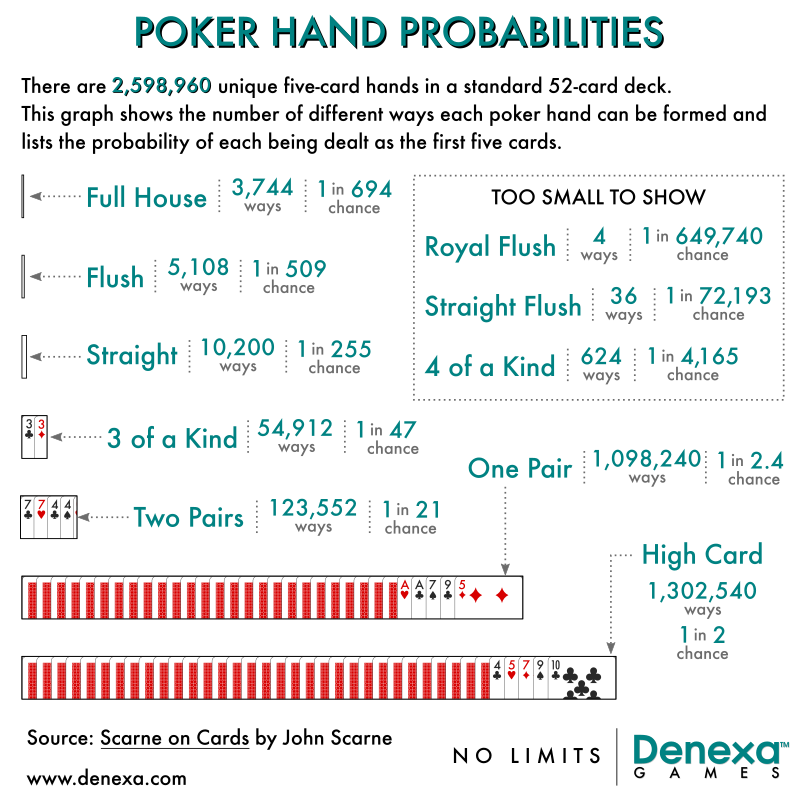Poker Hands Ranking Probability

Poker Card Hands Ranking
As a poker player, knowing poker hand odds and rankings is crucial to knowing where you stand when calculating your odds of winning. This guide is for players from beginner to intermediate level – meaning those with a basic knowledge of poker but who don’t know how best to calculate poker odds to gauge the chances of success – and will give you everything you need to beat others when. A Full House is the third best possible hand in the poker hand ranking system. Only a Straight Flush and 4-of-a-Kind rank above it. This makes it a very strong hand in Hold’em and is rarely beat on the river. That said, there are still many hands that rank under it. The next best hand on the list is called a Flush. The best Flush is the ace. If two hands are identical apart from the suits of the cards then they count as equal. In standard poker, if there are two highest equal hands in a showdown, the pot is split between them.

Mark Brader has provided the following tables of probabilities of the various five-card poker hands when five cards are dealt from a single 52-card deck, and also when using multiple decks.
The traditional hand types are described on the poker hand ranking page. These include one hand that belongs to two types at once - a straight flush is both a straight and a flush. With two or more decks, it is possible for other combinations to occur, such as a hand that has both a flush and a pair (such as 4-6-6-8-9 all of one suit). The left-hand tables include these composite hand types for multiple decks; in these tables 'plain' means a hand that is not a flush.
Poker Hands Ranking Order
The hands are listed in descending order of probability, which could be used as the basis for their ranking order in multi-deck poker variations. It can be seen that as the number of decks increases, flushes become easier to make than straights, and sets of equal cards become more common.
Poker Hands Ranking And Probability
Here is the Perl program that produced the tables. Mark Brader has placed both the program and the tables in the public domain.